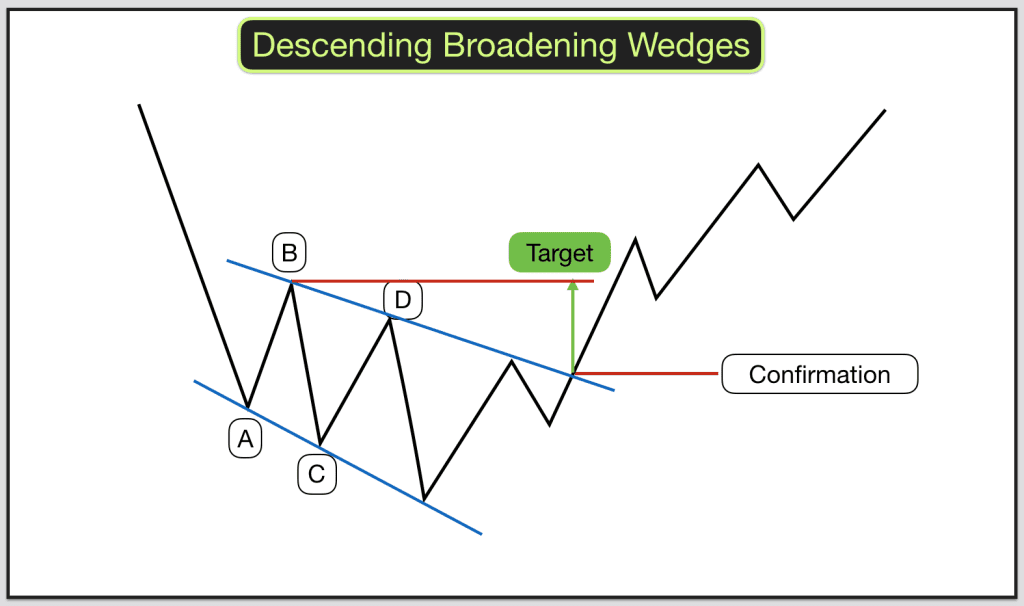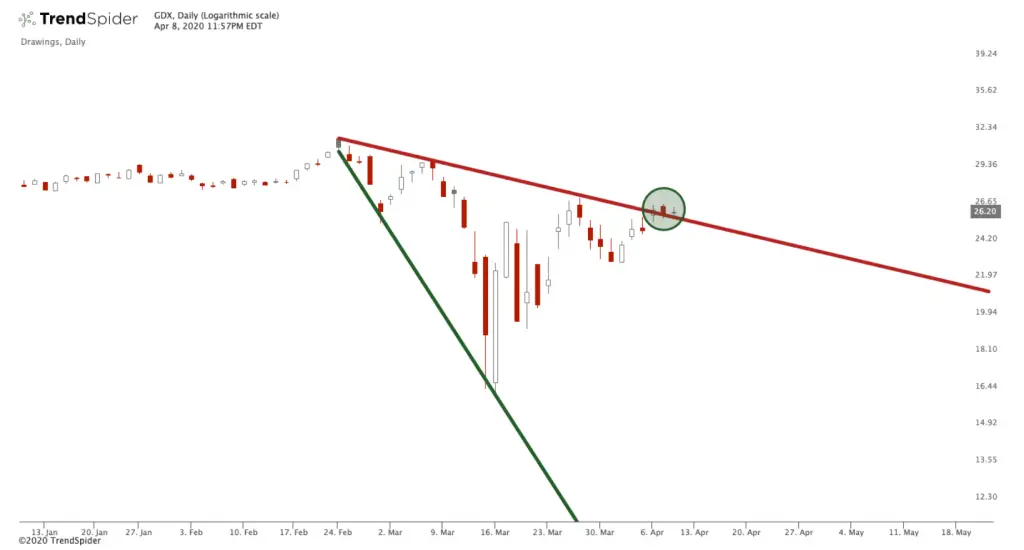

In order to draw the two trendlines that form the pattern, each trendline requires to be tested a minimum of two times, i.e.

The lower trendline is slightly steeper as the wedge widens over time. In the chart below, the development started on October 21, 2021, before the bullish breakout on November 4, 2021. The descending broadening wedge (DBW) consists of 2 non-parallel pattern lines that are moving downwards.

There are 3 primary aspects you have to pay attention to validate that what you observe is a broadening wedge formation. Identification of the Descending Broadening Wedge This makes it harder to approximate when the pattern might end. Because the two "arms" are moving apart there's no "crossing point" to the pattern like there is with a pennant, a wedge or triangle. The descending broadening wedge pattern can extend for extended periods on increasing volatility. To identify it from a flat or rising pattern, we use the midline. The main hint is the two lines moving apart from one another with clear support/resistance. Typical of other chart patterns, the wedge probably will not be perfectly formed. The pattern needs to have a noticeable resistance location on the leading and assistance location on the bottom. It's equally most likely to appear in drops in addition to uptrends. It looks like a loudspeaker with a downwards tilt. The descending broadening wedge is easily found on a chart. What Does a descending broadening wedge look like? A third wave kinds later on however the sellers lose control again after the formation of brand-new floors.ĭuring the development of a descending broadening wedge, volumes do not behave in any specific method however they increase highly when the assistance line breaks. A 2nd wave of decrease then happens of more magnitude, signalling the sellers' loss of control after a brand-new lowest point. The highest point reached throughout the very first correction on the descending broadening wedge's resistance line forms the resistance. The sellers handle to make the cost rebound on the resistance line but lose control after the formation of a brand-new floor. The divergence of the two lines in the same direction (increase in price magnitude) notifies us that the price continues to fall with movements that are significantly low in magnitude. This indicates that the descending broadening wedge pattern is considered legitimate if the rate touches the assistance line a minimum of 3 times and the resistance line twice (or the support line a minimum of two times and the resistance line 3 times).Ī descending broadening wedge does not mark the fatigue of the selling existing, but the buyers' aspiration to take control. Keep in mind: a line is stated to be "legitimate" if the cost line touches the assistance or resistance a minimum of 3 times. Each of these lines must have been touched a minimum of twice to confirm the pattern. The upper line is the resistance line the lower line is the support line. It is formed by two diverging bullish lines.Ī descending broadening wedge is confirmed/valid if it has good oscillation between the two upward lines. What is a descending broadening wedge?Ī descending broadening wedge is bullish chart pattern (said to be a reversal pattern). That's what we'll look at in the rest of this article. So before trading the pattern it's an excellent idea to use some pointers to attempt to determine the market sentiment and which way the trend is likely to unfold. Where the wedge reveals a stronger bearish tendency there's a substantially greater possibility that the market will continue to pattern downwards for a long time as the wedge grows.

Based on analysis of forex chart information there's a somewhat higher opportunity of an upward or bullish breakout from the pattern. This pattern appears across all forex charts and like the ascending version, the trading guideline is not completely uncomplicated.


 0 kommentar(er)
0 kommentar(er)
